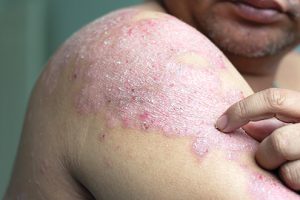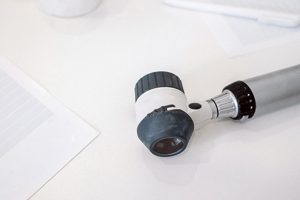Hidradenitis suppurativa (HS) is thought to be both underreported and under-diagnosed
Researchers at TCD, St Vincent’s University Hospital (SVUH) and Tallaght Hospital have isolated new treatment options for the common debilitating skin disease hidradenitis suppurativa (HS), which causes deep, painful lesions and leads to a poor quality of life.
For the study, which was published recently in the Journal of Investigative Dermatology, researchers used a comparative analysis that showed which cells were active and responsive to medication in those living with HS.
HS is thought to be both underreported and under-diagnosed, but researchers estimate 1-4 per cent of people have the disease. Sufferers experience extreme pain and must manage the psychological distress that accompanies the disease. Current treatments are often ineffective, so there is a pressing need for more effective therapies.
A research team led by Ussher Assistant Professor in Translational Immunology Jean Fletcher, researcher Barry Moran, both at TCD, and consultant dermatologists Prof Brian Kirby at SVUH, and Dr Anne-Marie Tobin at Tallaght, studied the cells that were most active in the blood and skin of HS patients compared with healthy volunteers. This approach led them to identify particular inflammatory cells in the skin of HS patients, known as Th17 cells, as key mediators of the disease.
Additionally, the researchers showed that the biological brakes that exist in a healthy immune system appear unable to control this inflammatory response in HS patients, indicating an underlying imbalance within their immune systems.
Crucially, this research brings to light the potential of targeting the Th17 pathway to treat HS, with the researchers believing that existing medication used to treat other skin conditions may prove effective. Prof Fletcher said: “Similar treatments have been extremely successful in treating psoriasis, which is another inflammatory skin disease. In the samples we screened we saw that HS patients who had been successfully treated by a therapy known as TNF blockers had far fewer Th17 cells than previously, which suggests that medications which target this pathway may hold the key.
“Our work provides a target molecule for drug developers… A number of products that focus on the Th17 pathway are already on the market, but have not yet been tested in clinical trials as agents for tackling HS. We hope our work opens the door to better outcomes for clinicians and HS patients alike.”
This study was also selected as the Editor’s Choice by the highly prestigious Science Translational Medicine journal.
Journal of Investigative Dermatology, DOI 10.1016/j.jid.2017.05.033.
 Irish Medical Times Medical News for Healthcare Professionals
Irish Medical Times Medical News for Healthcare Professionals






